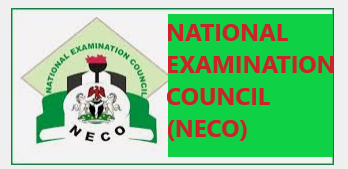Get the complete NECO Practical Chemistry Questions and Answers with the specimens for the 2025 SSC examination.
One of the best examination preparation materials that you would need has been freely made available in this article. That is, the NECO Practical Chemistry Questions and Answers 2025. We have noticed that most of our followers do search for how to find the examination easier and get a good grade. That is the reason why we have organised this material to help everyone.
Follow this article carefully to the end if you would like to find out the likely practical chemistry questions and the standard of the examination before the date.
CHEMISTRY PRACTICAL SPECIMEN:
Requirements:
(a) One burette (50cm²)
(b) One pipette (20cm³/25cm²). However, all candidates in a centre must use pipettes of the same volume.
(c) The usual apparatus and reagents for qualitative work, including:
(i) Dilute sodium hydroxide solution
(ii) Dilute ammonia solution
(iii) Dilute hydrochloric acid
(iv) Distilled water
(v) Red and Blue litmus paper
(vi) Barium chloride solution
(vii) Phenolphthalein
(d) Methyl orange
(e) One boiling tube
(f) Five test tubes
(g) Filtration
(h) Source of heat
Each candidate should be supplied with the following: Labelled An, Bn, Cn, where ‘n’ is the candidate’s serial number.
(a) 150cm³ of chloride acid solution in a bottle labelled “An”. The acid solution, which should be the same for all candidates, will contain 8.60cm³ of the concentrated hydrochloric acid per dm³ solution.
(b) 150cm³ of sodium trioxocarbonate (iv) solution in a bottle labelled “Bn”. The solution, which should be the same for all candidates, will contain 3.20g of sodium trioxocarbonate (iv) per dm³ of solution.
(c) One spatulaful of potassium trioxocarbonate (iv) salt in a specimen bottle labelled “cn”.
Similar Posts:
- NECO Practical Agriculture Questions And Answers | With Specimens
- NECO Biology Practical Specimen, Questions And Answers 2025 | Complete Specimen And Solutions
2025 NECO Practical Chemistry
CHEMISTRY (PRACTICAL)
NUMBER 1
(1)
Tabulate;
Burette readings;
Rough | 1st | 2nd | 3rd
Final readings in cm³;
|22.00|20.10 |20.20|20.30|
Initial reading in cm³;
|0.00|0.00|0.00|0.00|
Volume of A (acid) used cm³;
|22.00|20.10|20.20|20.30|
The average titre
= 20.10+20.20+20.30/3
=60.60/3
= 20.20cm³
;Va 20.20cm³
(1bi)
Concentration of A in mol/dm³, Ca = ?
Concentration of A (g/dm³) = 4.40 g/dm³.
.m.m of A, H²SO⁴ =(1*2)+(32*1)+(16*4)
=2+32+64
=98g/mol
Using concentration (mol/dm³) = Concentration (g/dm³)/m.m
Concentration (mol/dm³)
=4.40/98
=0.045mol/dm³
;: Concentration of A (mol/dm³) = 0.045mol/dm³
(1bii)
Concentration of B(mol/dm³) =???
Ca=0.045, Va=20.20, Vb=25.00, na=1, nb=1, cb=?
Using; CaVa/CbVb = na/nb
Cb=CaVanb/Vbna =0.045*20.20*1/25.00*1
Cb=0.036mol/dm³
(1biii)
Conc. of B(g/dm³) that reacted =??
molar mass of B, Na₂CO₃ = (23*2)+(12*1)+(16*3) = 106g/mol
Conc. of B(mol/dm³) = 0.036mol/dm3
Conc. (mol/dm³) = Conc. (g/dm³)/molar mass
(0.036/1) = Conc. (g/dm³)/106
Conc. (g/dm³) = 0.036*106 = 3.82g/dm³
Conc. of B(g/dm³) = 3.82/dm³
(1biv)
mass of the impurity in 1.0dm³ of B=??
Conc. of impurity (g/dm³) = 7.50 – 3.82 = 3.68g/dm³
:. Mass of impurity= Conc. (g/dm³) x vol. (dm³)
= 3.68×1 = 3.68g
(1bv)
Vol. of CO₂ produced in 1.0dm³ of B = ??
Mole of B= Conc. x Vol. (dm³)
Mole of B = 0.036*1
Mole of B =0.036mol
By proportion,
1mol of Na₂.10₃ = 1mol of CO₂
0.036mol of Na₂.10₃ = xmol of CO₂
mole of CO₂ produced = 1*0.036 = 0.036mol
:. Volume = mole * 22.4 = 0.81dm³
====================
NUMBER 2
(2)
[FILL THE TABLE WITH THE INFORMATION BELOW]
(2ai)
-TEST: C+5 cm³ of distilled water and shake thoroughly. Divide the solution into two portions
-OBSERVATION: It dissolves completely to give a colourless solution
-INFERENCE: C is a soluble salt
(2aii)
-TEST: To the first portion, add NaOH solution in drops.
-OBSERVATION: A white gelatinous precipitate is formed
-INFERENCE: Al³⁺ and Zn²⁺ present
(2aiii)
-TEST: Then add NaOH in excess
-OBSERVATION: The precipitate dissolve to give a colourless solution
-INFERENCE: Zn²⁺ present
(2aiv)
-TEST: To the second portion, add NH₃ solution in drops
-OBSERVATION: A white precipitate is formed
-INFERENCE: Al³⁺ and Zn²⁺ present
(2av)
-TEST: then in excess
-OBSERVATION: The white precipitate dissolves in excess NH₃
-INFERENCE: Zn²⁺ is confirmed
(2bi)
-TEST: 2cm³ of solution D + soda lime, heat, test with litmus paper.
-OBSERVATION: Ammonia gas (NH₃) is evolved, turning red litmus paper blue.
-INFERENCE: Presence of NH₄⁺ ions.
(2bii)
-TEST: Solution D + NaOH solution + CuSO₄ solution
-OBSERVATION: A blue precipitate formed
-INFERENCE: Presence of peptide bonds (proteins or peptides).
====================
NUMBER 3
(3ai)
I- to avoid the drop of the acid into the burette, which will alter the reading
II- to avoid change in concentration and contamination
III- to avoid bubbles in the pipette
(3aii)
This can be done through crystallisation. The solution is dissolved, heated to a high temperature and then allowed to cool. During cooling, the sodium chloride crystallized out.
(3bi)
(i) evaporating dish
(ii) Bunsen burner
(3bii) Solubility
See also:
NECO Civic Education Questions and Answers for 2025 | Essay and Objectives
NECO Biology Questions and Answers for 2025 | Essay and Objectives
NECO Government Questions and Answers for 2025 | Essay and Objectives
NECO Biology Practical Specimen, Questions And Answers 2025 | Complete Specimen And Solutions
NECO Home Management Questions And Answers 2025 | Essay And Objectives
NECO Mathematics Questions And Answers For 2025 | Theories And Objectives
NECO Agric Questions And Answers 2025 | Essay And Objectives
NECO Marketing Questions And Answers 2025 | Theories & Objectives
I hope you have read this article carefully. In case you have any other questions about the NECO Practical Chemistry questions and answers 2025, kindly make use of the comment section below this post.
